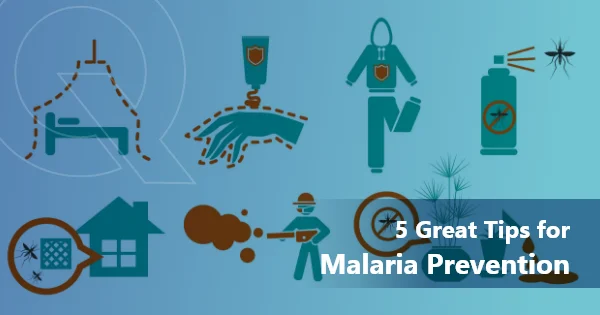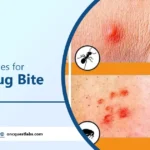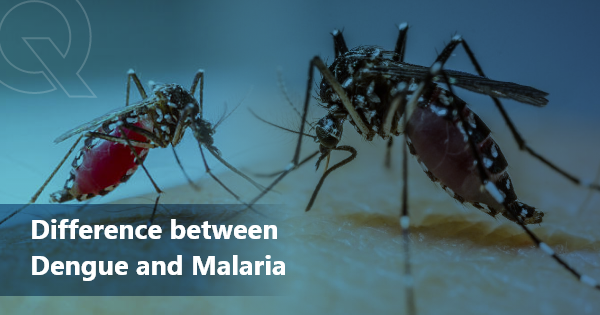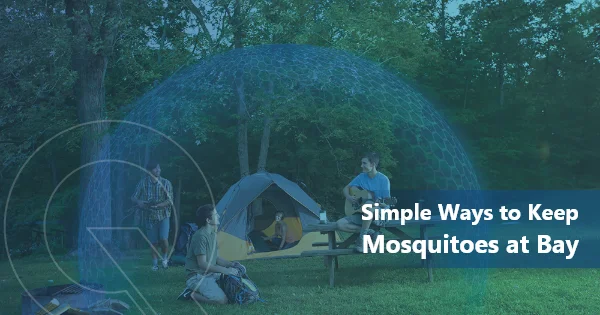
Malaria is a mosquito-borne disease, transmitted when a mosquito infected with the parasitic protozoa Plasmodium bites a person. While the mosquito remains unaffected by the Plasmodium, it can be lethal to humans that are bitten. Malaria is entirely preventable if you take the right steps to protect yourself. With World Malaria Day right around the corner, here are our 5 top tips for malaria prevention:
1. Avoid Open Spaces
Do not sleep in open spaces. Avoid sleeping around areas where mosquitoes breed and places with stagnant water (lakes, sewage canals, garbage dumps). At home, keep all the doors and windows closed whenever possible.
2. Adopt Nets
While it is recommended that you keep windows and doors closed at all times, it is also important to keep your home ventilated. This helps in the circulation of fresh air in your house and keeps your house cool and fresh. For this reason, we recommend that you fix nets on your windows and doors. Use a bed net in your bedroom, making sure that it is properly fixed and tucked in under your bed.
3. Use Mosquito Repellents
One option you can use are insect sprays that contain pyrethroids. Spray these in all living and sleeping areas, particularly during evening and night time. Other options are DEET-based repellents (AllOut, Good Knight) or natural repellents (Neem Oil). You can also apply mosquito repellent creams (Odomos) or lotions to exposed parts of your skin.
4. Wear Long Sleeves and Trousers
As mosquitoes bite your exposed skin, it makes sense to wear long trousers and shirts with long sleeves during evening and night time. The less skin you expose to the air, the harder it is for mosquitoes to bite you. In addition to this you can also apply some Permethrin on your clothes for extra protection from mosquitoes.
5. Apply Creams First and Repellents Second
If applying sunscreen or moisturizer, please note that you must apply either first and only then apply mosquito repellent creams. It is important to observe that the repellent cream must be exposed to the air for it to work effectively. It will not work if it is covered with a layer of moisturizer or sunscreen. If possible, choose the best of both worlds with a sunscreen or moisturizer that contains mosquito repellent.
Recognizing Malaria Symptoms
If you’ve followed all our tips, you should be well equipped to prevent any onset of Malaria. However, we feel it is just as important to be able to recognize malaria symptoms, in case of any unforeseen circumstances. The top malaria symptoms you should watch for are fever, nausea, sweating, vomiting, chills, headache, dry cough, body pain and fatigue.
Symptoms will appear in a cyclic manner, with cycles varying between 48 to 72 hours. At the onset of 2 or more of these symptoms, consult your doctor immediately.
The ABCD Mnemonic
Before we conclude, we wanted to share with you the ABCD mnemonic for fighting malaria, as shown below:
Awareness of Malaria Risk: Understanding malaria symptoms, its prevention help you gain a higher understanding, in order to avoid contraction of the disease.
Bite Prevention: Discussed in depth in our previous blog post , dealing with the root of the problem can help you avoid the problem before it manifests.
Chemoprophylaxis: A prescribed antimalarial medication that helps counteract the effects of malaria.
Diagnosis and Treatment: Prompt diagnosis helps in effective treatment and recovery.
A Life Free From Malaria
We hope these you follow these simple DIY tips to ensure a healthy life for you and your family. For more tips, read our article on . Simple Ways to Keep Mosquitoes at Bay





